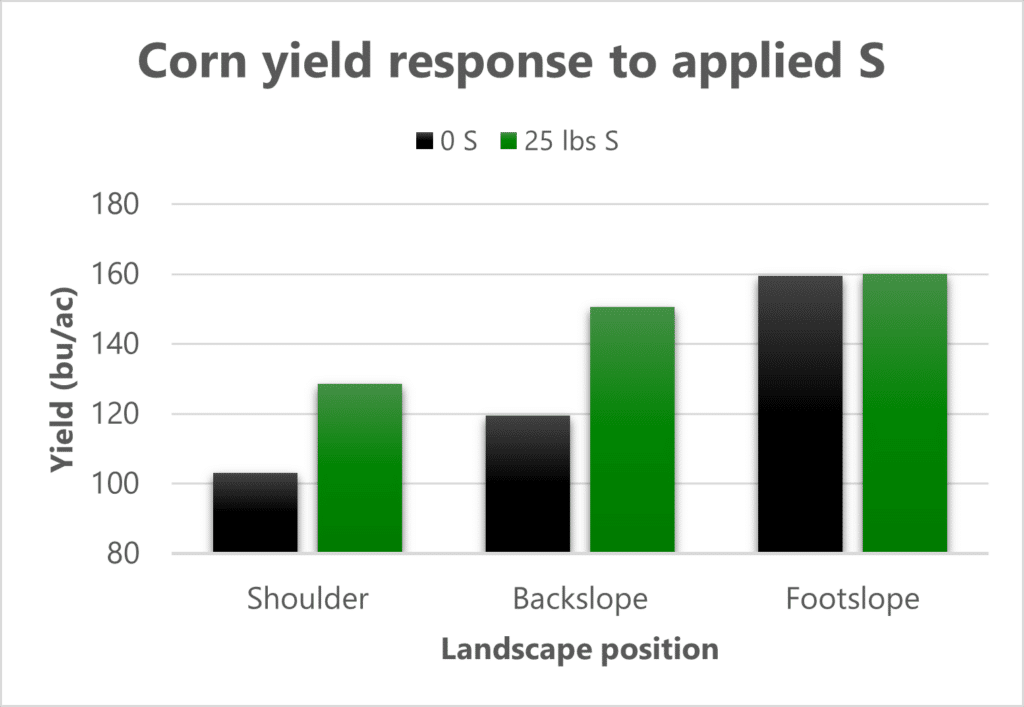Rely on your soil potential, not the weather
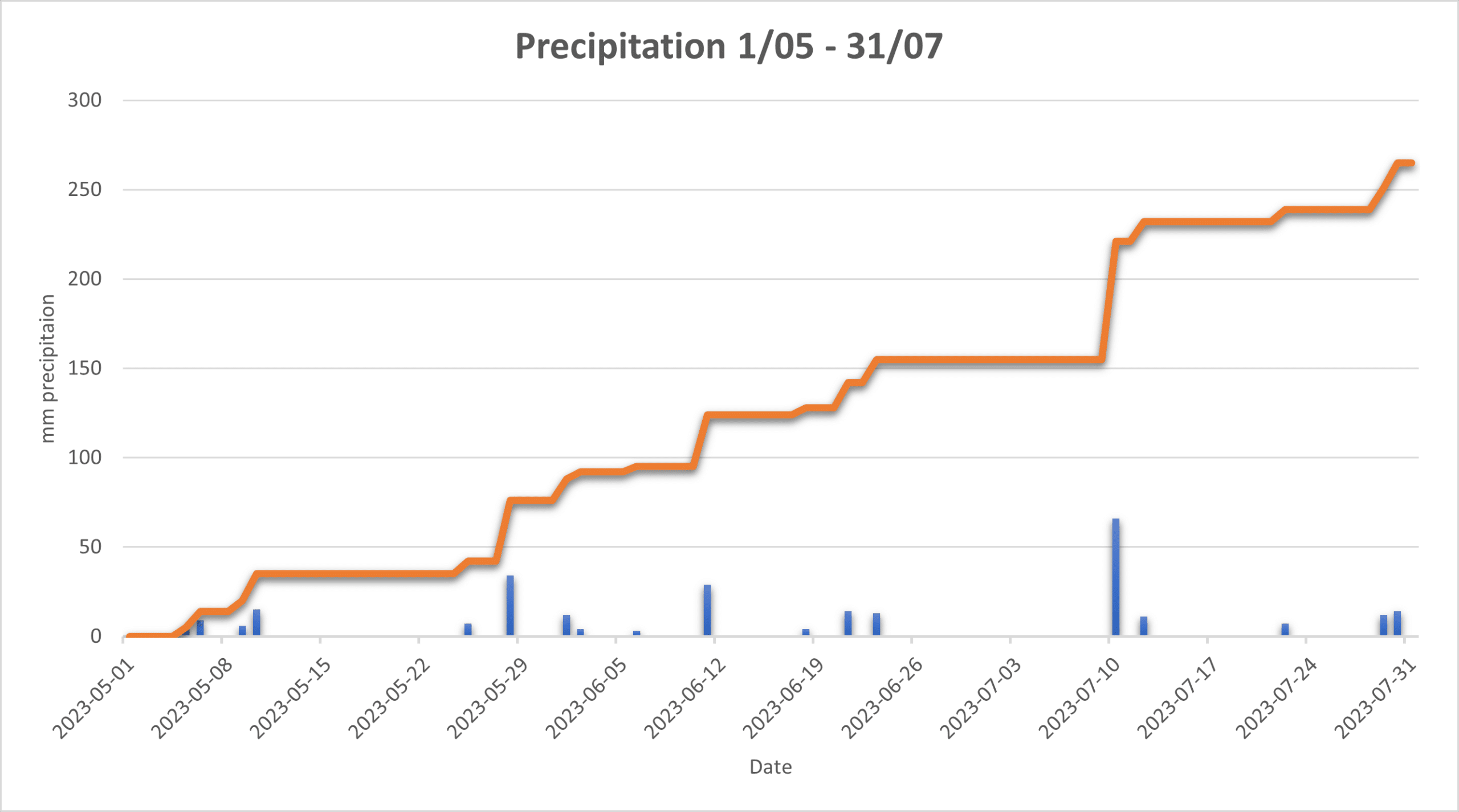
Wes Anderson
VP of Agronomy
wes@swatmaps.com
“Tell me if it’s going to rain or not” is a common objection to adopting variable rate fertilizer. And it’s true, I can’t predict that any better than your local weather forecast of choice. If we knew the exact answer to that, nitrogen management would be much easier. But for almost all other nutrients and pH, it hardly matters. This will no doubt bring plenty of “yeah but…,” but bear with me while I explain why in-season rain and absolute yield don’t matter as much as what you may think or even why it may be the opposite of what you think.
First, some caveats:
- Catastrophic drought is terrible and frustrating. Under these conditions it’s tough to cover fixed costs, never mind variable costs. Severely water-limiting conditions (<25% normal yield) will usually mask a lot of management choices and limit the upside of good management. But under a limited budget, there’s even more reason to focus inputs on areas that will provide the highest probability of return.
- There are nuances and exceptions. If the maximum yield achievable in a specific management zone is 10 bu/ac or 700 kg/ha, for example, due to a soil constraint like salinity that is challenging to “fix,” then we must keep that in mind and manage the budget to minimize losses. These areas normally have excess nutrition anyway!
- Long-term nutrient removal must also be considered. A non-responsive soil can eventually be depleted of nutrition with high yield removal over time - although that can take years, if not decades to happen, depending on the nutrient. So short-term and long-term return on investment are both part of the discussion, with land ownership playing into that.
Nutrient and lime response (i.e, the yield increase from an applied nutrient) is primarily driven by soil responsiveness, not absolute yield. It is that yield increase that dictates the ROI of that application. In other words, spending $50/ac on a nutrient that doesn’t increase yield is a poor investment, regardless of whether it’s a high yielding crop or a low yielding crop.
So how do we measure soil responsiveness? A complete soil test is still one of our best tools for this and can be supplemented by tissue testing or sap testing as well. And of course, well designed on-farm trials can be very useful to measure a variable of choice.
A good example is pH. Acid soils are a problem around the world, and liming is a common management practice where it is widespread. One of the most used tests for calculating lime rates is buffer pH. In fact, it’s the only test that tells us exactly how a soil will respond to a pH amendment. The buffer pH is affected primarily by soil texture and organic matter that “buffer” or resist a change in soil pH. The pH tells us if the soil needs lime, and the buffer pH tells us how much to apply. The lower the buffer pH, the more lime is needed to raise the pH to a desired level. What doesn’t really matter is if the field will yield 250 bu/ac of corn, or 150 bu/ac. If the pH is a limiting factor, it needs lime. It doesn’t really matter if it rains next year or not. In fact, correcting pH may alleviate aluminum toxicity, allow better root growth, water use efficiency, and nutrient use efficiency, resulting in an even greater response in a dry year.
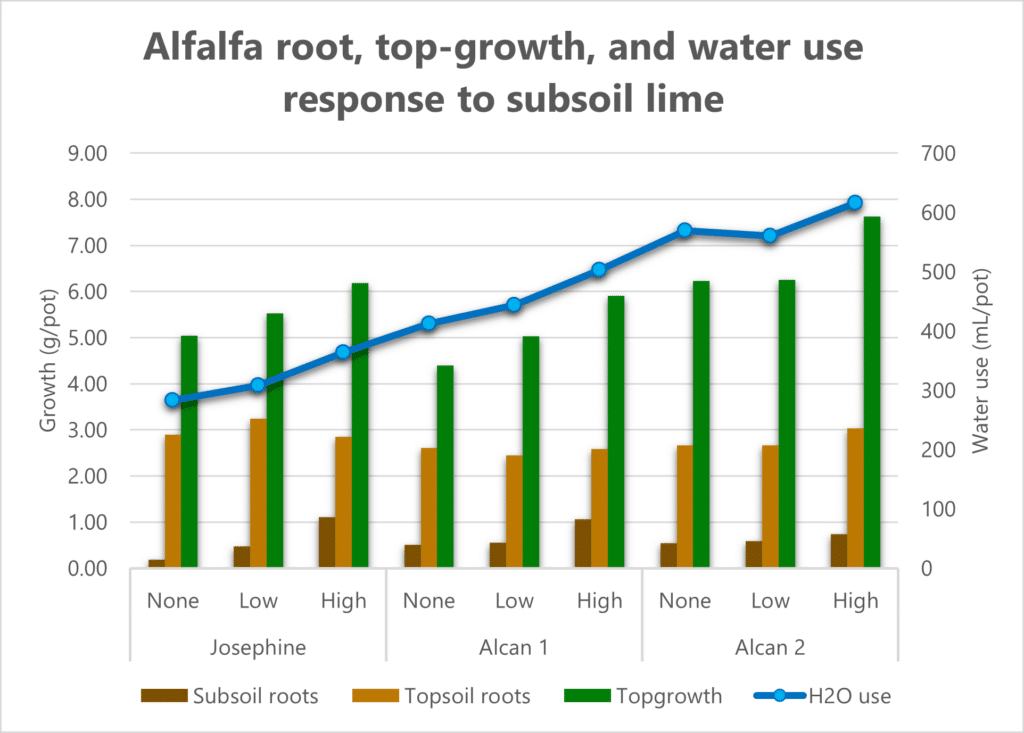
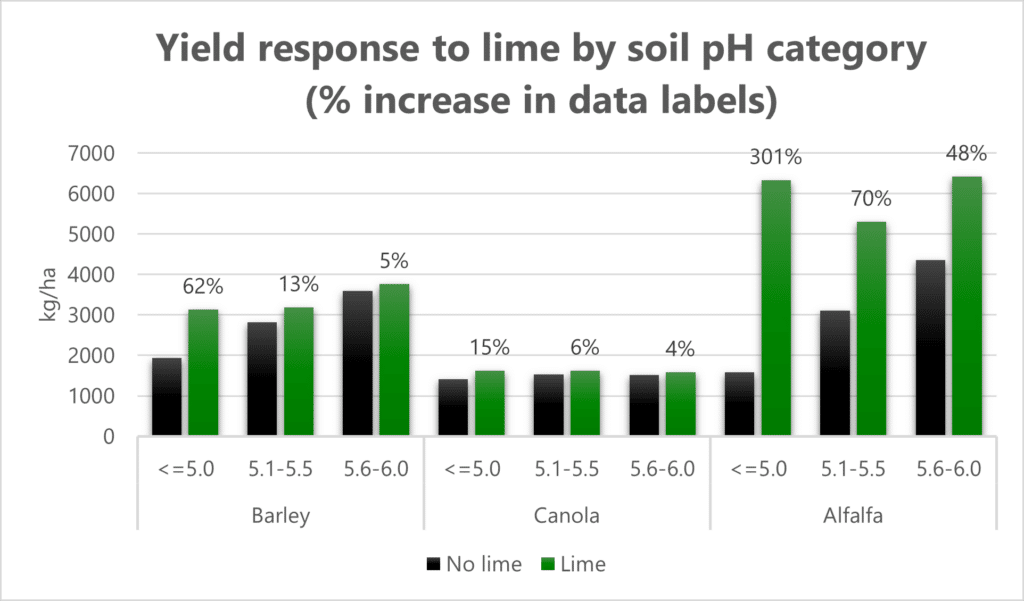
Phosphorus (P) response is also largely dictated by soil properties like pH and soil test P. Dry soil can also restrict soil P uptake, increasing the response to applied P. A dramatic example of this interaction with soil moisture and P uptake was demonstrated in a multi-site year study on vertisol clay soils in Queensland, Australia (Sands et al., 2022). Under low in-crop rainfall conditions, researchers observed incredibly large yield responses (as much as 300% yield increase in chickpea) to deep banded phosphorus (Figure 3a). This was primarily a result of available fertilizer P being located deeper in profile where there was soil water for nutrient uptake. In low rainfall seasons (but with available subsoil water), soil P stranded in the dry topsoil was unavailable to the crop, resulting in larger fertilizer responses to deep banded P (Dysart and Clermont sites). Further analysis revealed many of the strongest responses to banded P were observed when both surface and subsoil P levels were very low (Figure 3b). In summary, the response to applied P was mostly dictated by the crops’ ability to access P from fertilizer and soil, not absolute yield.
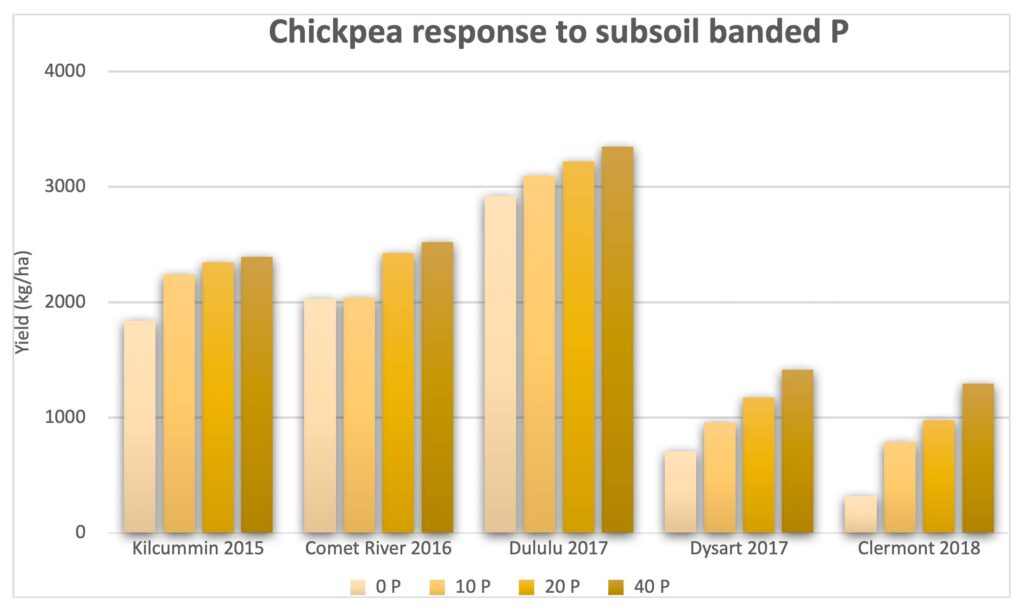
Sulfur is another example of absolute yield being relatively unimportant to fertilizer response. Soil properties such as sandy texture and low organic matter are typically attributed to strong sulfur response. Landscape position is also an important factor due to the mobility of S in soil water as well as the influence of moisture and organic matter on mineralization rates. For example, a corn trial in South Dakota on a landscape with highly eroded shoulder slopes revealed very large responses to applied sulfur on eroded upper landscape positions, but not at the foot-slope where there was 24-36” of topsoil. Even though the foot-slope was highest yielding, the soil was not responsive.
While it would be ideal to know what the next growing season will bring, all we can do is make well informed decisions on what we do know. We know a soil with a pH of 4.8 will respond to lime. We know a sandy, low organic matter knoll will typically respond to sulfur. We know a soil with only 5 ppm P will have a greater probability of P response than a soil with 40 ppm P, and so on. We know that proper balanced nutrition helps utilize available soil water. We know that under periodic dry topsoil conditions, uptake of some nutrients can be reduced, increasing the response potential to applications of those nutrients. We also know that we can map soil properties that drive relative differences in topsoil depth, moisture, organic matter, pH, and nutrient levels across a landscape, allowing more accurate spatial management of each.
Dry and wet years will come and go, but your soil and its variable properties stay the same. Focusing on what is under your control will lead to the highest probability of long-term success.
References:
Diebert, E.J., S. Halley, R.A. Utter, and J. Lukach. 1996. Canola response to sulfur fertilizer applications under different tillage and landscape positions. 1996 Annual Report to USDA/CSREES/Special Programs Northern Region Canola and North Dakota Oilseed Council.
Ejaz Ahmad Waraich, Rashid Ahmad, M. Yaseen Ashraf, Saifullah & Mahmood Ahmad (2011) Improving agricultural water use efficiency by nutrient management in crop plants, Acta Agriculturae Scandinavica, Section B — Soil & Plant Science, 61:4, 291-304, DOI: 10.1080/09064710.2010.491954
Franzen, D., & Grant, C. A. (2008). Sulfur response based on crop, source, and landscape position. Sulfur: A missing link between soils, crops, and nutrition, 50, 105-116.
Important crop factors affecting crop response to phosphorus. 1999. Better Crops, vol. 83, pages 16-19.
Kaiser, Daniel E. and Rosen, Carl J. Lime needs in Minnesota. University of Minnesota Extension. Accessed at: https://extension.umn.edu/liming/lime-needs-minnesota
McKenzie, R.C. and Nyborg, M. 1984. Influence of subsoil acidity on root development and crop growth in soils of Alberta and northeastern B.C. Can. J. Soil Sci. 64: 681-697.
Penney, D.C., Nyborg, M., Hoyt, P.B., Rice, W.A., Siemens, B. and Laverty, D.H. 1977. An assessment of the soil acidity problem in Alberta and northeastern British Columbia. Can. J. Soil Sci. 57:157-164. doi/pdfplus/10.4141/cjss77-020
Sands, D., Bell, M., & Lester, D. (2022). Increasing grain yields in the sub-tropics by deep banding phosphorus. In Proceedings of the 20th Agronomy Australia Conference.
Woodard, H.J. and Bly, A. 2000. Corn responds to sulfur fertilization on eroded soils. Fluid Fertilizer Journal. https://fluidfertilizer.org/wp-content/uploads/2016/05/35P14-16.pdf








